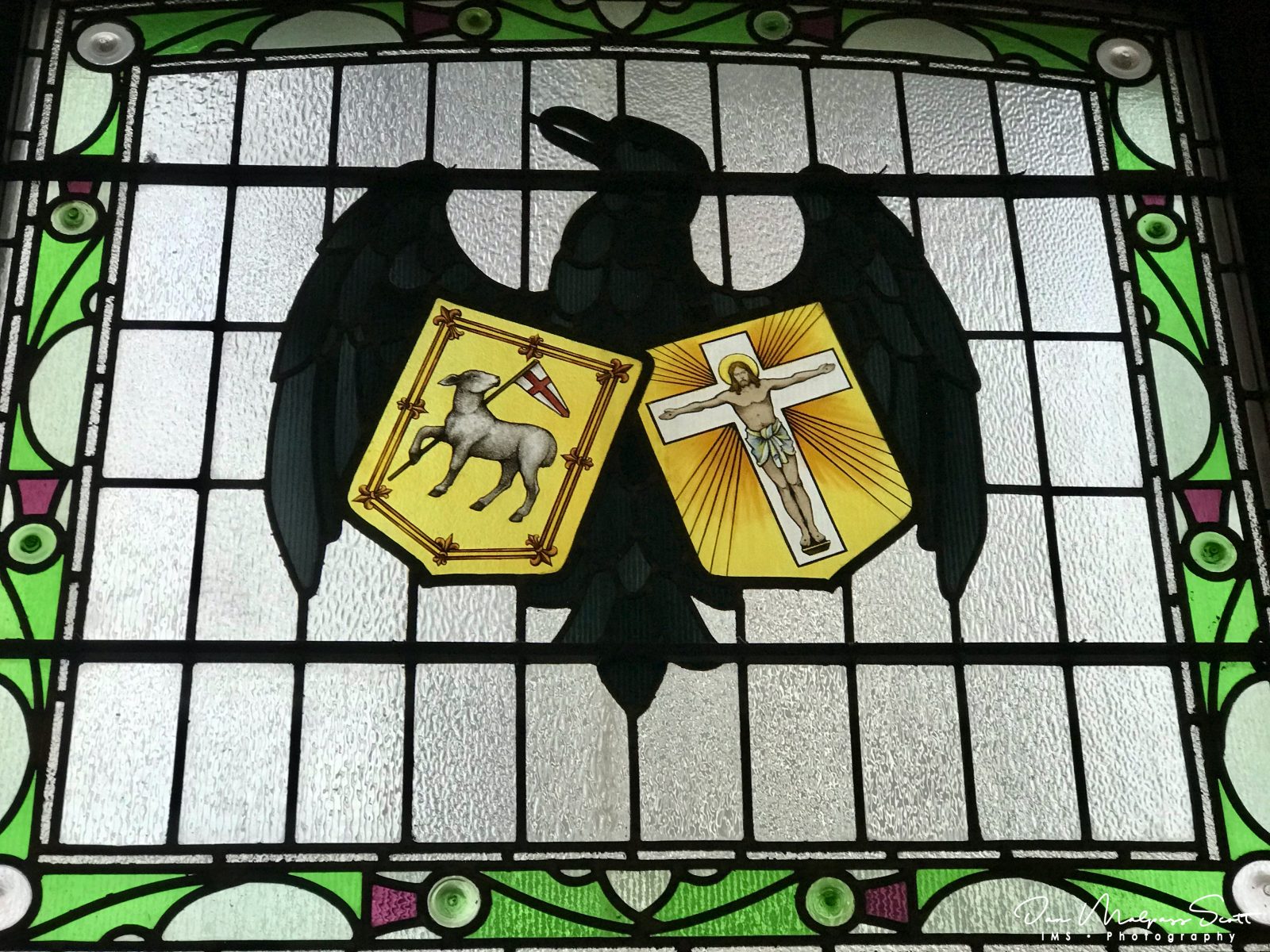Stained glass window in the Highland Hotel, Strathpeffer. The arms are of the Highland Railway Company, who built the hotel.
The Highland Railway (HR) was one of the smaller British railways before the Railways Act 1921, operating north of Perth railway station in Scotland and serving the farthest north of Britain. Based in Inverness, the company was formed by merger in 1865, absorbing over 249 miles (401 km) of line. It continued to expand, reaching Wick and Thurso in the north and Kyle of Lochalsh in the west, eventually serving the counties of Caithness, Sutherland, Ross & Cromarty, Inverness, Perth, Nairn, Moray and Banff. Southward it connected with the Caledonian Railway at Stanley Junction, north of Perth, and eastward with the Great North of Scotland Railway at Boat of Garten, Elgin, Keith and Portessie.
During the First World War the British Navy’s base at Scapa Flow, in the Orkney Islands, was serviced from Scrabster Harbour near Thurso. The Highland Railway provided transport, including a daily Jellicoe Express passenger special, which ran between London and Thurso in about 22 hours. In 1923, the company passed on approximately 494 miles (795 km) of line as it became part of the London, Midland and Scottish Railway. Although its shorter branches have closed, former Highland Railway lines remain open from Inverness to Wick and Thurso, Kyle of Lochalsh, Keith (as part of the Aberdeen to Inverness Line), as well as the direct main line south to Perth.


